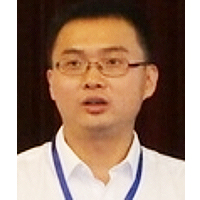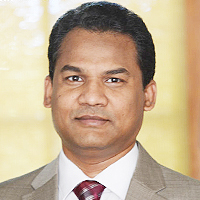Effect of Pulmonary Rehabilitation on Non-obstructive Disease Congenital Kyphoscoliosis Patient in Kuwait
Published on: 18th July, 2024
A case study of a non-COPD (Chronic Obstructive Pulmonary Disease) patient with congenital kyphoscoliosis to see the effect of pulmonary rehabilitation after 36 sessions given for chest disease in Kuwait with signs and symptoms, physical capacity, functional level, and Quality of life.
Extracorporeal Shock Wave Combined with Traditional Chinese Medicine Bone-setting Manipulation for External Humeral Epicondylitis: A Randomized Clinical Trial
Published on: 23rd July, 2024
Objective: The purpose of this study was to evaluate the clinical efficacy of extracorporeal shock waves combined with traditional Chinese medicine bone-setting manipulation for external humeral epicondylitis. Methods: Ninety-two patients with external humeral epicondylitis were randomly divided into an observation group and a control group. Patients in the control group were treated with extracorporeal shock waves while those in the observation group with traditional Chinese medicine bone-setting manipulation based on the control group. Patients in both groups were evaluated by the Visual Analogue Scale (VAS), Mayo Elbow Performance Score (MEPS), and Disabilities of the Arm, Shoulder, and Hand Questionnaire (DASH) before and after treatment. The inflammatory factors such as IL-6, IL-10, TNF-ɑ, and clinical outcomes were contrasted before and after treatment. Results: There were statistically significant differences in VAS score, MEPS score, and DASH score between the two groups before and after treatment (p < 0.05). The observation group exhibited a more pronounced improvement in each score compared to the control group. Post-treatment, the inflammatory factors of both groups were significantly lower than pre-treatment levels (p < 0.05), with the observation group showing a more noticeable decrease. The overall effectiveness of the observation group was higher than that of the control group, and the difference was statistically significant (p < 0.05).Conclusion: The combination of extracorporeal shock wave therapy and traditional Chinese medicine bone-setting manipulation can effectively alleviate pain symptoms and improve dysfunction caused by external humeral epicondylitis, while also reducing inflammatory factor expression. This combined treatment may prove more effective than extracorporeal shock wave therapy alone.Clinical Trial: Registration: ChiCTR2200066075.
West Africa's Drought Dynamics: An Investigation of SPI and SPEI indices (1979-2021)
Published on: 24th July, 2024
West Africa’s population is projected to reach 500 million by 2050, exacerbating the need for reliable drought detection and management strategies to ensure food and water security. This study investigated drought detection in West Africa using the Standardized Precipitation Index (SPI) and Standardized Precipitation Evapotranspiration Index (SPEI). The objective is to evaluate the performance of SPI and SPEI in detecting droughts and compare their strengths and limitations. The results revealed that both indices detected droughts effectively, but SPEI was more sensitive to evapotranspiration and temperature change. The findings offer valuable insights into climate change impacts, drought monitoring, and sustainable water resource management in the regions under investigation in West Africa.
Sense and antisense Oligodeoxynucleotides to Glun1 Nmdar are Cognitive Enhancers (Nootropics) and protective agents in normal and ischemic (Anoxic) conditions-In vitro study
Published on: 7th July, 2017
OCLC Number/Unique Identifier: 7317653967
Aims: Implication of modified N-methyl-D-aspartate receptors (NMDAR) in synaptic plasticity and learning was investigated in normal and pathological conditions.
Study design: We studied the efficiency of synaptic plasticity, the development of the long-term potentiation/depression (LTP/LTD) in olfactory cortex slices, treated with antisense or sense oligodeoxynucleotides (aODNs and sODNs) to the GluN1 subunit of NMDAR.
Main outcome: aODNs induced the LTD development in slices after high-frequency tetanization. Contrariwise, in sliced treated with sODNs the enhanced LTP developed. Under conditions of severe anoxia (10 min), treatment of slices with aODNs and sODNs contributed to the preservation of synaptic activity which has been blocked in the control untreated slices. In practical implications such directed up- and down regulation of NMDAR might be useful in the readjustment of brain activity by the controlling balance of excitation/inhibition.
The importance of gestational age in first trimester, maternal urine MALDI-Tof MS screening tests for Down Syndrome
Published on: 31st December, 2019
OCLC Number/Unique Identifier: 8513004205
Background: The proposal that MALDI-ToF mass spectrometry could be used as a direct, rapid and affordable diagnostic tool in clinical laboratory medicine has moved from a theoretical possibility to a reality for Microbiology. Several studies have proposed the application of this technology in obstetric and gynaecological evaluation of patients. In particular, we have proposed that the adoption of MALDI-ToF mass spectrometry in examination of maternal pregnancy urine samples for the detection of Downs syndrome.
Methods: A retrospective collection of 20 Down Syndrome and 100 non-aneuploid pregnancy urines at 12 to 14 weeks gestation, collected in 2007-2008 from high risk pregnancy cohorts, were examined by MALDI-ToF mass spectrometry in the mass/charge range between 1000 and 100000 m/z. Normalisation of spectral data was defined using mass bins of 100 m/z expressed as a percentage of the total ion count of the mass spectra from 2000 to 11000 m/z. Of the ninety 100 m/z bins, forty-six were identified as m/z bins at which statistically significant differences in spectra occurred between Downs and control/non-aneuploid samples. Based on the differences and variance, for values at these bins, weighted scores of the probability of being Downs were assigned. Comparative algorithms consisting of various mass bins were tested for ability to distinguish Down syndrome from non-aneuploid pregnancy.
Results: Although various algorithms could distinguish Downs from non-aneuploid controls, it was found that gestational age was a confounding factor and that if separated into gestational age matched cohorts the ability to distinguish the groups improved dramatically e.g. whilst a 19 bins algorithm separated 100% of Downs from non-aneuploid pregnancies for a 9% false positive rate in the mixed gestational ages group; a two bin algorithm distinguished 100% of Downs for a 6% false positive rate for the 12 weeks gestational age pregnancies.
Conclusion: Normalised MALDI-ToF mass spectra, at 2000 to 11000 m/z, of maternal urine gives rise to gestational age specific screening tests algorithms for Downs’s syndrome.
Paediatric Medicines: Formulation Considerations
Published on: 31st July, 2017
OCLC Number/Unique Identifier: 7317595687
The use of unlicensed and off-label medicines in children is widespread and has raised an increasing concern over the last years. The majority of medicines taken by children are extemporaneously compounded by pharmacist, and there is a lack of information regarding bioavailability, suitability and stability. These formulations must be prepared from pure active substance and not from commercially available dosage forms. The development of paediatric formulations, particularly those suitable for very young children, can be a challenge to pharmacists. There is limited knowledge available about the acceptability of different dosage forms, administration volume, dosage form size, taste, safety of formulation excipients regarding to age and development status. The selection of formulation and route of administration depends on the disease being treated and the clinical condition. European Guidelines and reflection papers recommend that pharmaceutical development should consider some parameters like capability, acute or long-term illness, caregiver convenience, disability, culture differences and formulations more attractive to children must be explored.
Obstetric Renal Failure: Causes, Prognosis, and Evolution
Published on: 8th August, 2024
The incidence of obstetric acute renal failure remains significant in developing countries. The aim of our study is to define the risk factors involved in the occurrence of ARF during pregnancy or during the immediate postpartum period and to evaluate its evolutionary profile in terms of epidemiology, etiopathogenesis, and therapeutic management over the years in Morocco. This is a retrospective study conducted in the maternal-infant resuscitation service of the Ibn Rochd University Hospital of Casablanca, over the period from January 2020 to August 2023, including 95 patients. The current incidence in our series over this period was 22.2%. The mean age of our population was 33 ± 7.74 years [18-43 years], 67.3% of patients were in the gestational period, compared to 33.7% in the immediate postpartum period. Fourteen patients were primiparous (8.6%), 27.4% had a history of miscarriage, and 10.7% had a history of pre-eclampsia. Oligo-anuria was initially identified in 24 patients. The most frequent etiology was pre-eclampsia (56.7%), followed by hemorrhage (27%) and sepsis (19.3%). The evolution was marked by recourse to hemodialysis in 62% of cases, with a maternal mortality of 26%. The existence of heart disease, the context of pre-eclampsia, and the use of diuretics and vasoactive drugs were significantly correlated with maternal survival. No factor was correlated with secondary recovery from ARF. The development of health structures and the optimization of screening strategies are the keywords for prevention.
Classification of diseases using a hybrid fuzzy mutual information technique with binary bat algorithm
Published on: 30th December, 2020
OCLC Number/Unique Identifier: 8530268032
Genetic datasets have a large number of features that may significantly affect the disease classification process, especially datasets related to cancer diseases. Evolutionary algorithms (EA) are used to find the fastest and best way to perform these calculations, such as the bat algorithm (BA) by reducing the dimensions of the search area after changing it from continuous to discrete. In this paper, a method of gene selection was proposed two sequent stages: in the first stage, the fuzzy mutual information (FMI) method is used to choose the most important genes selected through a fuzzy model that was built based on the dataset size. In the second stage, the BBA is used to reduce and determine a fixed number of genes affecting the process of classification, which came from the first stage. The proposed algorithm, FMI_BBA, describes efficiency, by obtaining a higher classification accuracy and a few numbers of selected genes compared to other algorithms.
Wave Forces on Vertical Structures in Shallow Water: Numerical Evaluation
Published on: 31st March, 2017
OCLC Number/Unique Identifier: 7286353055
The actions exerted by waves on a coastal structure very much depend upon hydrodynamic processes that originate on shallow waters; even though significant progresses have been made in the last few years towards a full understanding of wave breaking, design work is still largely based on classical stability formulas. The recent availability of reliable models based on the numerical integration of full Navier-Stokes equations provides an important tool, but the evaluation of forces on vertical structures in shallow waters is still a particularly delicate application because of the complex hydrodynamic issues involved.
The paper presents deals with the numerical simulation of wave effects on front of a vertical obstacle on a sloping bottom, with the objective of clarifying some physical issues which are relevant towards the applicability of numerical Navier-Stokes simulation as a design tool.
A Case of Good Efficacy of Tolvaptan in a Patient with Markedly Enlarged Polycystic Kidney
Published on: 20th August, 2024
A 61-year-old patient with autosomal dominant polycystic kidney disease (Irazabal class 1E) in whom renal function had decreased and kidney size had increased over the past 3 years (change in serum creatinine, 1.3 mg/dL to 1.5 mg/dL; change in total kidney volume, 5632 cm3 to 7301 cm3) was treated with tolvaptan 60 mg/day. After 8 years of tolvaptan treatment, serum creatinine remained at 1.51 mg/dL, and total kidney volume was at 6812 cm3. Adequate salt intake and good weight control may have resulted in good outcomes, even in patients with treatment-resistant giant cystic kidney disease.
















